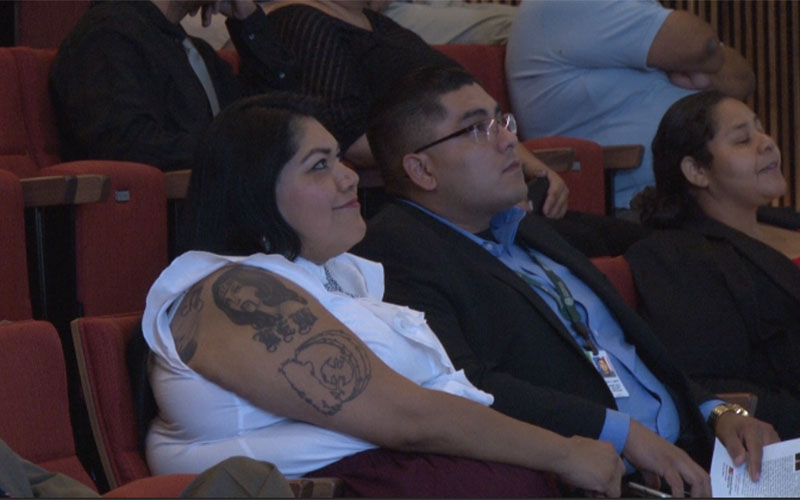PHOENIX — Law students, professors and tribal members gathered recently at the Sandra Day O’Connor School of Law in downtown Phoenix to watch the new documentary “Tribal Justice.”
The documentary features two chief judges from tribes in Arizona and California, and highlights some of the issues found on reservations, including lack of federal funding and guardianship appeals for families in Indian Country.
Those behind the documentary said they hope the project helps shed a light into what tribal justice looks like while motivating the changes they would like to see.
“I hope for more collaboration with our state partners, state courts, and state service providers,” Claudette White said.
She is the Chief Judge of the Quechan tribe and one of the judges featured in the documentary.
“I’m hoping that they look into tribal courts to see the work that we’re doing and maybe take some of those models, work with us closer to figure out how we can address common issues affecting all of our members,” she said.
Some of those issues include the vast differences that exist between the tribal and state courts, in addition to a lack of economic resources.

Tribal Judge Claudette White watches the “Tribal Justice” screening in Phoenix. (Photo by Courtney Mally/Cronkite News)
“I would say my biggest challenge as being a court judge has been trying to accomplish justice with very little resources,” White said. “In terms of our tribal court budget in our jurisdiction, our reservation is in Arizona and in California. Because we’re in Public Law 280 jurisdiction, we don’t get any federal funding.”
One big difference between tribal and state courts is the differing approach to disciplinary actions. Tribal courts utilize peacemaking to achieve legal resolution, rather than punitive punishment for those in trouble with common law.
Robert N. Clinton, Foundation Professor of Law and an active Tribal Judge, said state courts have a lot to learn from tribal courts.
“Even though they might look at the resources that tribal courts have and say, ‘These are just poorer copies of the federal and state system’ they are not. They are innovative, they are caring and they work, which is the most important point,” Clinton said.
Active tribal court members said they also hoped the “Tribal Justice” documentary would help start an open conversation about some of the recurring problems with the youth in their community.
“It’s connected to a lot of different issues like economics, jobs, crime and drugs”, said Alfred L. Urbina, Deputy Associate Director at the Tribal Justice Support Office of Justice Services. “Hopefully, (the documentary) raises these conversations and keeps these people talking about what we can do to help fix the problem.”
Some members of the Native American community said that while bringing awareness to some of the struggles seen on the reservations is a good thing, what they really hope for are solutions to those struggles.
“There’s still plenty out there who don’t have their voice heard or they don’t have the means or the people surrounding them to help them and they fall into a deeper situation than the ones portrayed,” said Bear Blackhorse, a member of the Navajo Nation.